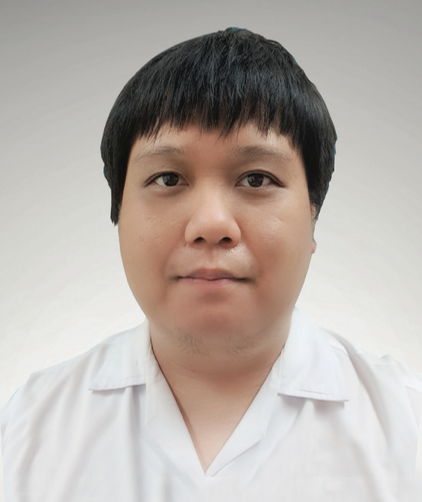Pulmonary Tuberculosis in Healthcare Workers at a University Hospital: A Significant Burden of Subclinical Disease
Main Article Content
Abstract
OBJECTIVES: This research intends to determine the incidence of subclinical and active pulmonary tuberculosis (TB) among healthcare workers at a university hospital in Bangkok, Thailand.
MATERIALS AND METHODS: A retrospective cohort study included data from full-time employees aged 18 and over from January 1st, 2018, to December 31st, 2022. Data from the hospital’s employee database and extracted cases of subclinical and active pulmonary TB were collected to calculate their annual incidences. The study also compared jobs with different levels of patient exposure risk and sputum culture positivity rates between both groups.
RESULTS: During the five-year period, 65 cases of pulmonary TB were diagnosed. Of these, 45 (69.2%) were subclinical, and 20 (30.8%) were active pulmonary TB. The annual incidence of subclinical pulmonary TB per 100,000 persons was 98.12, 47.85, 46.93, 53.70, and 23.24 between 2018 and 2022, respectively. Meanwhile, the incidence of active pulmonary TB for the same period was 18.40, 29.90, 35.20, 23.87, and 11.62 per 100,000 persons, respectively. Compared to Thailand’s overall TB incidence of 155 per 100,000 persons in 2022, our lower incidence was likely due to early detection and treatment of TB among healthcare workers, raising concerns about the transmissibility of subclinical pulmonary TB. Notably, a significant proportion of healthcare workers with pulmonary TB were nurses (41.5%), and 22.2% of subclinical pulmonary TB cases were culture-positive.
CONCLUSION: The study revealed that subclinical pulmonary TB constitutes a considerable proportion of pulmonary TB among healthcare workers. It also highlights the contagious potential of subclinical pulmonary TB, contributing to the TB burden in both healthcare workers and society. Given the asymptomatic nature of subclinical pulmonary TB, which complicates detection through passive case finding, implementing active case finding using routine chest radiographs is essential for preventing TB transmission.
Article Details

This work is licensed under a Creative Commons Attribution-NonCommercial-NoDerivatives 4.0 International License.
This is an open access article distributed under the terms of the Creative Commons Attribution Licence, which permits unrestricted use, distribution, and reproduction in any medium, provided the original work is properly cited.
References
World Health Organization. Global tuberculosis report 2023. Geneva: World Health Organization; 2023. Licence: CC BY-NC-SA 3.0 IGO.
World Health Organization. Implementing the end TB strategy: the essentials, 2022 update. Geneva: World Health Organization; 2022. Licence: CC BY-NC-SA 3.0 IGO.
Division of Tuberculosis, Department of Disease Control, Ministry of Public Health. Thailand Operational Plan to End Tuberculosis, Phase 2 (2023 - 2027); 2023.
Drain PK, Bajema KL, Dowdy D, et al. Incipient and Subclinical Tuberculosis: a Clinical Review of Early Stages and Progression of Infection. Clin Microbiol Rev. 2018;31(4) :e00021-18. doi: 10.1128/CMR.00021-18.
Division of Tuberculosis. National Tuberculosis Control Programme Guideline, Thailand 2021. Bangkok: Division of Tuberculosis; 2021.
Mingchay P, Paitoonpong L, Kawkitinarong K, et al. Tuberculosis at a university hospital, Thailand: A surprising incidence of TB among a new generation of highly exposed health care workers who may be asymptomatic. PLoS One. 2022;17(8):e0273027. doi: 10.1371/journal.pone.0273027.
Trakultaweesuk P, Niyompattama A, Boonbamroe S, et al. Tuberculosis among Hospital Staffs in a Tertiary Care Hospital, Northeastern Thailand. Srinagarind Med J. 2017;32(3):204-213. (Accessed May 28, 2024, at https://li01. tci-thaijo.org/index.php/SRIMEDJ/article/view/90589.).
Inchai J, Liwsrisakun C, Bumroongkit C, et al. Tuberculosis among Healthcare Workers at Chiang Mai University Hospital, Thailand: Clinical and Microbiological Characteristics and Treatment Outcomes. Jpn J Infect Dis. 2018;71(3):213-9. doi: 10.7883/yoken.JJID.2017.274.
World Health Organization. Occupational health: health workers [Internet]. 2022. (Accessed May 28, 2024, at https:// www.who.int/news-room/fact-sheets/detail/occupationalhealth--health-workers.).
Min J, Chung C, Jung SS, et al. Clinical profiles of subclinical disease among pulmonary tuberculosis patients: a prospective cohort study in South Korea. BMC Pulm Med. 2020;20(1):316. doi: 10.1186/s12890-020-01351-z.
Tang P, Liang E, Zhang X, et al. Prevalence and risk factors of subclinical tuberculosis in a low-incidence setting in China. Front Microbiol. 2022;12:731532. doi: 10.3389/ fmicb.2021.731532. 12. Sangphoo T, Chaiear N, Chanpho P. Work-Related Tuberculosis among Health Workers Employed in a Tertiary Hospital in Northeastern Thailand: A Report of Nine Cases. Int J Environ Res Public Health. 2020;17(14):5156. doi: 10.3390/ijerph17145156.
Monklang W, Dumavibhat N, Bunman S, et al. Incidence of Pulmonary Tuberculosis among People Undergoing Health Check-up at Siriraj Hospital. JPMAT. 2022;12(1):24-32. (Accessed May 28, 2024, at https://he01.tci-thaijo.org/index. php/JPMAT/article/view/252311.). 14. Jeong YJ, Park JS, Kim HW, et al. Characteristics of subclinical tuberculosis compared to active symptomatic tuberculosis using nationwide registry cohort in Korea: prospective cohort study. Front Public Health. 2023;11:1275125. doi: 10.3389/fpubh.2023.1275125.


